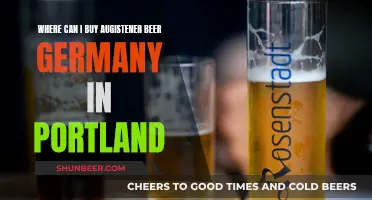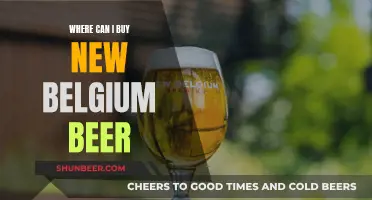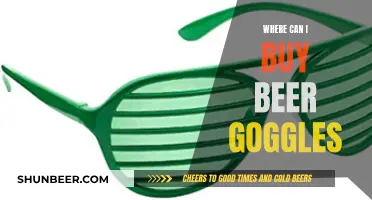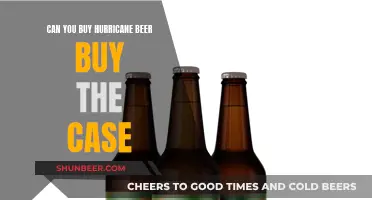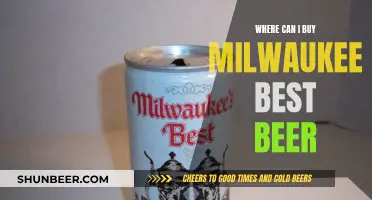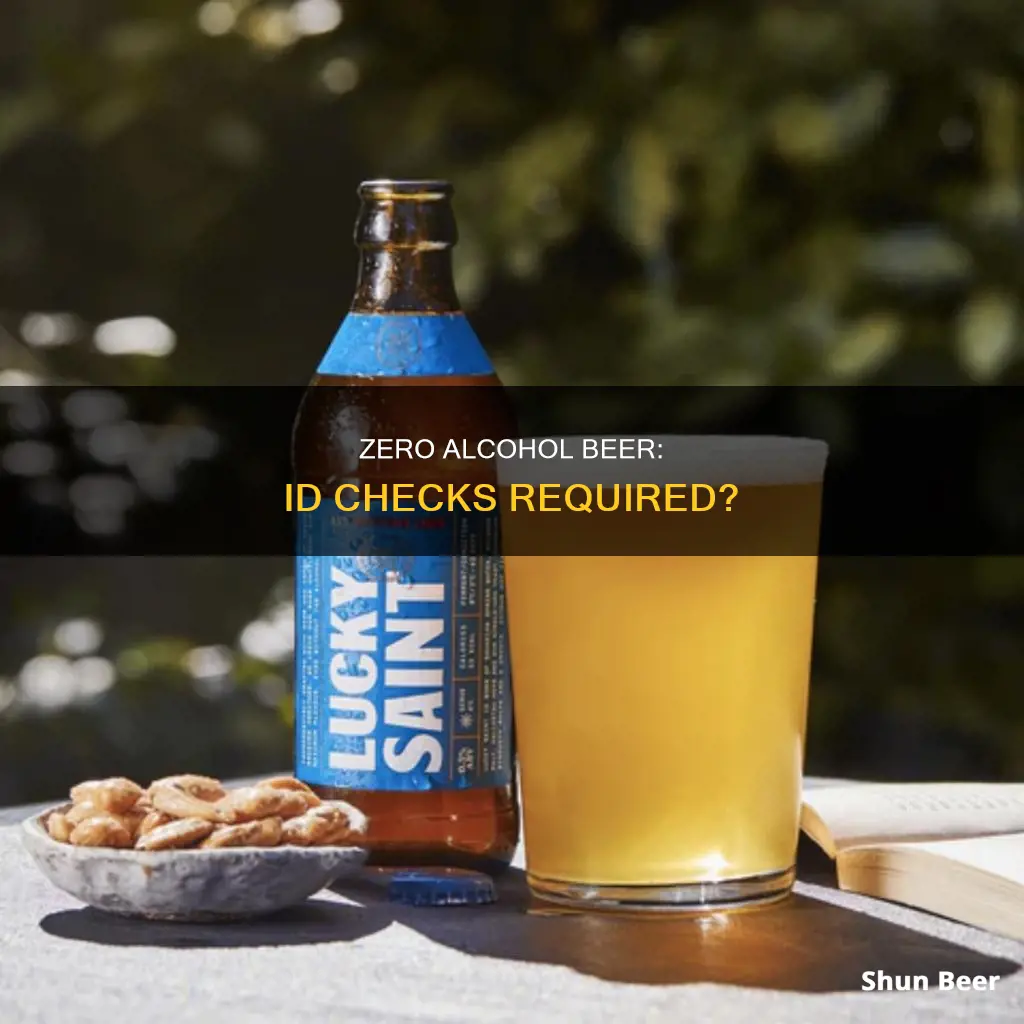
Whether or not you need to show ID to buy zero-alcohol beer depends on where you are in the world. In the US, for example, the laws vary from state to state. While some states allow for the purchase of non-alcoholic beer under the age of 21, others do not. Oregon, West Virginia, and Wyoming only apply this rule if the drink contains at least 0.5% ABV, while Ohio requires purchasers to be over 18. In the UK, you don't need ID to buy alcohol under 0.5% ABV, but pubs, bars, and shops often treat alcohol-free drinks the same as alcoholic drinks, restricting sales to those who can prove they're of legal drinking age.
| Characteristics | Values |
|---|---|
| Do you need an ID to buy zero-alcohol beer? | It depends on the region. In the US, it depends on the state. |
| Why do you need an ID to buy zero-alcohol beer? | To avoid promoting alcohol to children and to make it easier to enforce rules regarding alcoholic drinks. |
| What is the typical alcohol content of zero-alcohol beer? | Up to 0.5% ABV. |
| Is there a difference between "non-alcoholic" and "alcohol-free" beer? | Yes, only beer with 0.0% ABV can be labelled as alcohol-free. |
What You'll Learn
- Non-alcoholic beer is regulated by the Federal Alcohol Administration Act (FAA)
- Non-alcoholic beer usually contains up to 0.5% ABV
- In the US, the legal drinking age is 21, but this varies by state
- In the UK, you don't need ID to buy alcohol under 0.5% ABV
- Retailers restrict the sale of alcohol-free beer to avoid promoting alcohol to children and to make it easier to enforce rules regarding alcoholic drinks

Non-alcoholic beer is regulated by the Federal Alcohol Administration Act (FAA)
The FAA does not indicate a minimum alcohol by volume (ABV) percentage for a drink to be considered alcoholic. However, the Internal Revenue Code (IRC) and the Alcohol and Tobacco Tax and Trade Bureau (TTB) define "beer" as a beverage containing 0.5% ABV or more. Drinks with an ABV of less than 0.5% are considered "cereal beverages" and are not subject to federal alcohol excise taxes.
The FAA governs what it calls "malt beverages", which are defined as fermented beverages "derived from an infusion or decoction in potable water of both malted barley and hops". Traditional non-alcoholic beer would fall under the class type of cereal beverages, which are malt beverages containing less than 0.5% ABV. Notably, for a drink to be subject to the FAA, it would first have to be considered a "malt beverage", so any malt beverage not made with hops would not be subject to the FAA.
The FAA also sets out rules for the labelling of non-alcoholic beer. Generally, the standard labelling requirements for full-strength beer apply to non-alcoholic beer, including the producer, type, and volume. However, non-alcoholic beer labels must also include "Nontaxable under section 5051 I.R.C." and, if the product contains any alcohol, "contains less than 0.5% alc by vol".
While non-alcoholic beer is regulated by the FAA, the laws surrounding the purchase of these drinks by minors are determined at the state level. In many states, minors cannot purchase alcohol but are able to consume it under certain conditions, such as with the permission or in the presence of a parent or guardian. Some states allow minors to purchase non-alcoholic beer, while others do not. For example, Oregon, West Virginia, and Wyoming only permit the purchase of non-alcoholic drinks by minors if they contain less than 0.5% ABV, while Ohio is the only state that requires buyers to be over 18, rather than 21.
Buying Beer in Corny Kegs: Is it Possible?
You may want to see also

Non-alcoholic beer usually contains up to 0.5% ABV
In the US, non-alcoholic beer is defined as beer that contains up to 0.5% ABV. This means that most non-alcoholic beers contain a small amount of alcohol, and you may get a little bit drunk if you consume a lot of it. However, to be labelled as alcohol-free, a beer must contain 0.0% ABV.
In the US, non-alcoholic beers are regulated under the Federal Alcohol Administration (FAA) Act, which covers all malt beverages regardless of their alcohol content. This means that non-alcoholic beers are treated as generic "beers" under the law. However, different states have different rules. For example, Oregon, West Virginia, and Wyoming only apply drinking age restrictions to non-alcoholic beers if they contain at least 0.5% ABV, while Ohio is the only state that requires buyers to be 18 or over, rather than 21.
In the UK, the term "non-alcoholic" is not supposed to be used for drinks that are not alcohol-free. Instead, the term "alcohol-free" is used for drinks containing no more than 0.05% ABV, while "de-alcoholised" is used for drinks containing no more than 0.5% ABV. However, because government guidance on labelling is voluntary, you may find drinks labelled as "non-alcoholic" that contain up to 0.5% ABV.
Buying Beer at Texas Gas Stations: What's the Deal?
You may want to see also

In the US, the legal drinking age is 21, but this varies by state
In the US, the legal drinking age is 21. However, this varies by state, and there are exceptions to the federal law. While the federal government has a legal age for purchasing alcohol, states are free to set their own laws regarding the age at which a person may privately consume alcohol.
The National Minimum Drinking Age Act, passed in 1984, established 21 as the national minimum legal drinking age. All 50 states require one to be 21 or older to purchase alcohol. However, there are state exceptions to this law, usually involving religious activities, educational purposes, lawful employment, parental or spousal consent, law enforcement purposes, and medical reasons. These exceptions have resulted in a complex set of laws where local jurisdictions, states, and federal regulations determine who can distribute, buy, possess, and consume alcohol in a particular state.
For example, in 30 states, you can tend bar if you are 18, in four states at 19, in one state at 20, and in 15 states at 21. The minimum age for servers bringing drinks to tables may also differ from those behind the bar. Additionally, some states only allow those underage to consume alcohol at the private home of a parent or guardian, while others permit consumption in licensed establishments in the company of a parent, guardian, or spouse.
The laws surrounding the purchase of non-alcoholic beer by those under 21 are also murky and vary by state. Non-alcoholic beers are regulated by the Federal Alcohol Administration Act, which governs all malt beverages regardless of alcohol content. However, the legal drinking age of 21 is not a federal rule but is set by each state, and states have different definitions of what constitutes an alcoholic beverage. Some states, like Oregon, West Virginia, and Wyoming, only apply the drinking age rule if the drink contains at least 0.5% alcohol by volume (ABV). In contrast, others, like Ohio, require purchasers to be over 18 rather than 21.
Buying Beer in New Jersey: Sunday Shopping Laws
You may want to see also

In the UK, you don't need ID to buy alcohol under 0.5% ABV
While it may be frustrating to be asked for ID when buying alcohol-free beer, retailers are ultimately trying to protect children from the dangers of alcohol and avoid any potential mix-ups that could result in the accidental sale of alcohol to minors. This is especially important in pubs and bars, where owners are responsible for what customers drink on the premises.
It's important to note that alcohol-free beer does contain a small amount of alcohol, usually up to 0.5% ABV. This means that it's not completely alcohol-free, and consuming it casually could result in a small amount of alcohol intake. If you're aiming for a completely sober lifestyle, it's important to check the labels and choose drinks with 0.0% ABV.
In the UK, alcoholic beverages need to be labelled with their alcoholic strength when it's above 1.2%. The term "low alcohol" refers to products with an alcoholic strength of 1.2% or less, while "alcohol-free" means the drink contains an alcoholic strength of 0.05% or less. These regulations ensure transparency, responsible consumption, and safety for consumers.
Carlsberg Beer: USA Availability and Accessibility
You may want to see also

Retailers restrict the sale of alcohol-free beer to avoid promoting alcohol to children and to make it easier to enforce rules regarding alcoholic drinks
Alcohol-free beer is often treated the same as alcoholic beer by retailers, pubs, and bars. This means that customers may be asked to provide ID when purchasing it, even though it contains little to no alcohol. This is because the packaging and appearance of alcohol-free beer are almost indistinguishable from alcoholic beer.
Retailers restrict the sale of alcohol-free beer for two main reasons: to avoid promoting alcohol to children, and to make it easier to enforce rules regarding alcoholic drinks.
Avoiding promoting alcohol to children
Alcohol-free beer may not contain much alcohol, if any at all. However, the packaging and the drink itself are almost identical to alcoholic beer. Many alcohol-free and non-alcoholic beers are produced by companies that also produce alcoholic drinks. Allowing minors to buy these products could indirectly promote alcoholic drinks to them.
Some alcohol organisations, such as AB-Inbev and the Portman Group, have publicly available policies about the promotion and sale of non-alcoholic drinks to minors. AB-Inbev's Responsible Marketing and Communications Code specifically mentions that it covers alcohol-free and non-alcoholic products. The Portman Group's voluntary Code of Practice on the Responsible Naming, Packaging and Promotion of Alcoholic Drinks also covers non-alcoholic products.
Retailers such as Tesco, Waitrose, and Co-op have also stated that they voluntarily restrict the sale of non-alcoholic drinks to avoid promoting alcohol to minors.
Enforcing rules regarding alcoholic drinks
Treating alcohol-free beer the same as alcoholic beer makes it easier for pubs, bars, and retailers to enforce rules regarding alcoholic drinks. This is especially relevant in pubs and bars, where owners are responsible for what people drink on the premises. It can be difficult for staff to distinguish between customers drinking alcohol and those drinking non-alcoholic products.
In shops, point-of-sale systems can flag up the differences between alcohol-free and alcoholic beer to prevent the sale of alcoholic drinks to minors. However, this also affects the availability of alcohol-free drinks where the sale of alcohol is restricted to specific days or hours.
Root Beer Extract: Where to Buy and How to Use
You may want to see also
Frequently asked questions
It depends on where you are. In the US, it depends on the state. Some states allow for the purchase of non-alcoholic beer under the age of 21, while others do not. For example, Oregon, West Virginia, and Wyoming only allow the purchase of non-alcoholic beer if the drinker is over 21 and the drink contains at least 0.5% ABV. In Ohio, you only need to be over 18. In the UK, you do not need ID to buy alcohol under 0.5% ABV.
Non-alcoholic beers are still regulated by the Federal Alcohol Administration Act, even though their alcohol content is below the limit to be considered an alcoholic beverage. This is because the FAA regulates all malt beverages, regardless of alcohol content.
Most non-alcoholic beers contain up to 0.5% ABV, so they do contain a small amount of alcohol. Alcohol-free beer, on the other hand, has 0.0% ABV. To be labelled alcohol-free, breweries must send a sample to the Tobacco Tax and Trade Bureau (TTB).
In the US, it depends on the state. In some states, minors can drink non-alcoholic beer with parental permission and/or in the presence of a parent or guardian. However, this varies from state to state, and some states do not allow minors to drink non-alcoholic beer at all.


